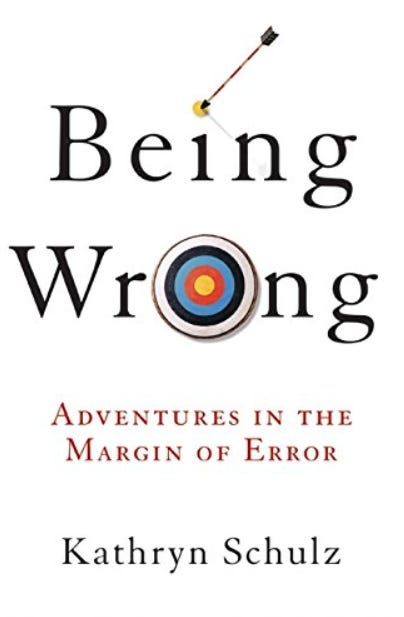I owe readers of last week’s piece on “Death and the Merchant” an apology. I said that the two panels I discussed were on the inside of the painting, and the donors were on the outside. I had that backwards: As was usual,1 the donors were on the inside, and the painting of Death in dispute with a merchant became, when the outer doors were closed, a diptych covering a triptych.
Thus, the merchant isn’t reaching across a holy image to shake his note at Death, he’s merely stretching his arm from one painting to the next. Which is still pretty cheeky and cool.
I’m impressed that I could make such a rookie error, since I’ve been looking at these kinds of religious paintings for a couple of decades, and there was a famous Memling triptych with the correct “donor family on the inside” layout probably 15 paces from where I saw the painting I wrote about. It’s a great reminder that once we get an idea we like into our heads, it’s very hard to move off it.
Management apologies for the mistake, and is pleased to offer this correction. And to offer special thanks to Prof. Laurinda S. Dixon of Syracuse University, who was very generous in setting right my boneheaded error.2
Corrections, and being wrong generally, occupy a special place in my life. When I was in journalism, corrections were dreaded, and frequently viewed with great shame. They were frequently thought of as a ding on your career, and many people went to great lengths to avoid having to write one.3 It was in the institutional culture to make the reporter feel dreadful, as if they’d let down The Truth. The best reporters, however, stepped up to their errors.4
Here in Silicon Valley being wrong often has a different status. After all, being wrong is the price of learning difficult things. People here have risen high in tough scientific, engineering, and technical subjects. And, barring a small number of superhumans who soak up math like a sponge, most of us find out that technical subjects involve more practice, more quizzes, and making more mistakes than learning most subjects in the humanities. A lot of us drop out along the way.
The best techies come to understand that being wrong is a necessary part of learning. The worst assume that humanities subjects like Politics and Sociology are easier, since there are fewer situations in which one is manifestly wrong. Untrained in the nuances of these subjects, they then conclude they can make pronouncements in these areas without doing a lot of work, and perform terribly in them.
In discussing what makes Valley culture special, people often say that business failure, too, can be treated as a form of learning. If your startup goes bust, it isn’t necessarily a kiss of death. Did you have good beginnings? Did you learn and course correct? You might get backed again.
Goodness knows I don’t love pointing out last Sunday’s error, and my own fool-headedness in not second-guessing my now obviously wrong assumptions. I’m salving myself, as best I can, with today’s incremental learning.
There are a couple of great books on the subject of being wrong. New Yorker writer Kathryn Schulz’s Being Wrong explores error as fundamental to the human condition, and highlights some of history’s most valuable mistakes, such as Columbus aiming for India and hitting America. I’m currently enjoying Barry Ritholtz’s How Not To Invest, about the few, but powerful, errors we make in investing, abetted by a thoroughly misguided financial press. When real estate billionaire Sam Zell pronounces on the macro economy, he’s like a Silicon Valley engineer telling you about how to fix Washington - only people put Sam on television and treat his opinions like gospel.
The books are both delightful reads, and I hope to God I spelled the authors’ names right.
She also said that Death and the Merchant are playing a game, the way the knight plays chess with Death in The Seventh Seal. Since the merchant can’t see the game, and Death is doling out all the coins while they both point at various prices and promises, I think it’s far more likely to be about calculation (based on the way the coins resemble jetons, used at the time for calculation) or payment.
I once had an extraordinary correction debate. I’d written a story for The Wall Street Journal, edited on a Friday to run on Monday. It did, and on Tuesday I got a call from a relative of one of the people I’d quoted. The previous Friday I’d spoken to him, checking his quote and the correct spelling of his name.
“I wanted to thank you,” she said, “he died over the weekend, and it was so nice to read his voice one last time.”
Clearly, the story erred in suggesting he was still alive, yet we were unsure how to write a correction for that. Something like, “The man who was alive when the story was fact-checked died soon after”? Would we be admitting that we were wrong or careless, or reminding our readers that death must come for us all, and the rest of the world won’t stop for it? Would this hurt the feelings of the person who called me, since we’d be telling the world their loved one was dead? Was that important?
In consultation with a few higher-ups, it was decided that it was best if this time we let the sleeping dog lie.
In those days the culture of corrections stemmed largely from the technology of printed newspapers. People in the business said that they were writing “the first draft of history,” and it had better be right. In today’s digital papers, I frequently see sentences changed and data altered with no notification to the reader that the copy is different. News and facts are now in the Permanent Beta.









Admire your post Quentin but not surprised that you have the commitment to the truth to make it. Only people who are using their energies to try and make a difference make mistakes. Only the best correct them.
So glad you mentioned Kathryn Schulz’s amazing book, Being Wrong. For me, it’s been one of those rare books that made me rethink my own inner workings. I especially love her basic question: what does being wrong feel like (present tense, as you think the wrong thing)? It feels exactly like being right. Words to live by!